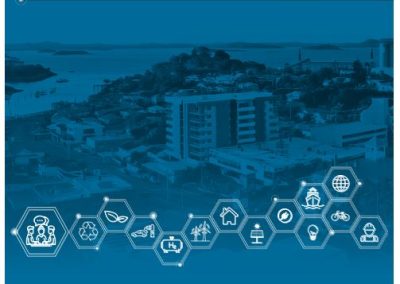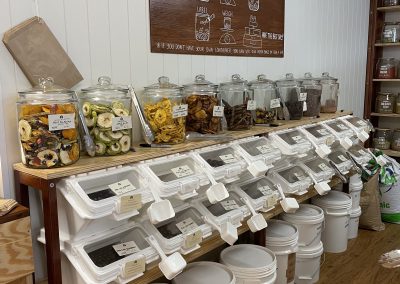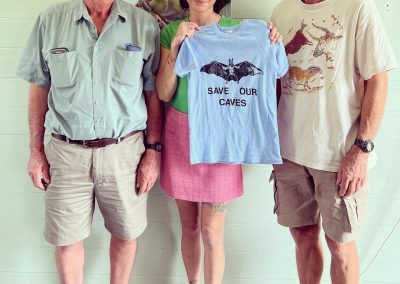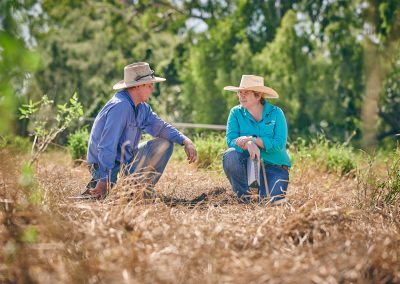Our plan for Coastal and Marine Ecosystems
Thanks to the international significance of the Great Barrier Reef (GBR), our coastal and marine ecosystems are among our region’s best understood and most extensively studied and reported natural assets. There are however, still significant gaps in our understanding and knowledge, particularly of keystone species, and critical population thresholds and habitats that ensure food chains are sustained (locally and around the globe). Safeguarding the Great Barrier Reef attracts significant investment to our region, however our coastal and marine systems face what could perhaps be described as the most complex combination of pressures and threats. Coastal urban centres coupled with an international port, significant recreation and fishing industries, and discharge from the largest (and predominantly agricultural) catchment draining to the reef all place significant strain on systems that are also at the frontline of rising sea levels and global temperatures. Encouragingly, the progress we make towards targets for other natural assets will only benefit our coastal and marine ecosystems.
Key attribute – Estuarine and shoreline ecosystems
Goal 1 – The extent, condition, resilience and function of estuarine, shoreline and coastal ecosystems is maintained or improved
- Target 1: Extent and function of high value coastal ecosystems is maintained or improved for seagrass, mangroves, rookeries and roosting sites
- Target 2: Queensland Sustainable Fisheries Strategy 2017-2027 targets are met
- Target 3: No additional species that rely on coastal ecosystems added to EPBC or NCA lists
- Target 4: Supra-tidal wetland hydrological regimes and spatial extent are maintained
Strategies:
| 5. Identify and protect priority species/ecosystems and critical refugia to maintain viable populations and key ecosystem services |
| 4. Improve our understanding of linkages between freshwater and coastal/marine and ground water systems. |
| 7. Promote and support integrated water resource planning (ground and surface water) |
| 8. Reduce the impact of barriers to aquatic connectivity within and between freshwater and coastal waterways |
| 10. Promote and support management practices that reduce demands on water resources manage salinity risk and avoid contamination of water sources |
| 14. Protect and prioritise the coastal zone as a critical buffer |
| 19. Promote and support business/lifestyle choices and practices that minimise negative impacts on our natural assets |
| 31. Promote and support management practices that minimise the impacts of weed and pest species |
| 15. Understand and prepare for changes in sea level and tidal/storm surges |
| 13. Understand and prepare for changes in sea temperatures, ocean acidity and coastal currents |
Achieving this target also benefits these assets and drivers:
Strategies:
| 5. Identify and protect priority species/ecosystems and critical refugia to maintain viable populations and key ecosystem services |
| 4. Improve our understanding of linkages between freshwater and coastal/marine and ground water systems. |
| 8. Reduce the impact of barriers to aquatic connectivity within and between freshwater and coastal waterways. |
| 14. Protect and prioritise the coastal zone as a critical buffer. |
| 10. Promote and support management practices that reduce demands on water resources manage salinity risk and avoid contamination of water sources. |
| 19. Promote and support business/lifestyle choices and practices that minimise negative impacts on our natural assets. |
| 31. Promote and support management practices that minimise the impacts of weed and pest species. |
| 15. Understand and prepare for changes in sea level and tidal/storm surges |
| 13. Understand and prepare for changes in sea temperatures, ocean acidity and coastal currents |
Achieving this target also benefits these assets and drivers:
| 5. Identify and protect priority species/ecosystems and critical refugia to maintain viable populations and key ecosystem services |
| 4. Improve our understanding of linkages between freshwater and coastal/marine and ground water systems. |
| 7. Promote and support integrated water resource planning (ground and surface water) |
| 8. Reduce the impact of barriers to aquatic connectivity within and between freshwater and coastal waterways. |
| 10. Promote and support management practices that reduce demands on water resources manage salinity risk and avoid contamination of water sources. |
| 19. Promote and support business/lifestyle choices and practices that minimise negative impacts on our natural assets. |
| 31. Promote and support management practices that minimise the impacts of weed and pest species. |
| 15. Understand and prepare for changes in sea level and tidal/storm surges |
| 13. Understand and prepare for changes in sea temperatures, ocean acidity and coastal currents |
Achieving this target also benefits these assets and drivers:
Key attribute – Marine ecosystems
Goal 2 – The extent, condition, resilience and function of marine ecosystems is maintained or improved
- Target 1: Water quality targets to maintain Great Barrier Reef ecosystems are achieved (set through the Reef 2050 Water Quality Improvement Plan and reported annually through the reef report card)
- Target 2: Extent and function of high value marine ecosystems is maintained or improved for seagrass meadows and corals
- Target 3: Impact of Crown of Thorns to regional coral reefs is negligible and/or reversible within 1-2 years
- Target 4: No additional species that rely on our region's marine ecosystems added to EPBC or NCA list
- Target 5: Trajectory of known listed threatened species that rely on coastal ecosystems is stable or improves
- Target 6: Great Barrier Reef Marine Park Zoning plan supported- compliance targets met
- Target 7: Queensland Sustainable Fisheries Strategy 2017-2027 targets met
Strategies:
| 19. Promote and support business/lifestyle choices and practices that minimise negative impacts on our natural assets. (this one could be pulled out as captured in overarching strategies) |
| 5. Identify and protect priority species/ecosystems and critical refugia to maintain viable populations and key ecosystem services |
| 4. Improve our understanding of linkages between freshwater and coastal/marine and ground water systems. |
| 8. Reduce the impact of barriers to aquatic connectivity within and between freshwater and coastal waterways. |
| 10. Promote and support management practices that reduce demands on water resources manage salinity risk and avoid contamination of water sources. |
| 31. Promote and support management practices that minimise the impacts of weed and pest species. |
| 15. Understand and prepare for changes in sea level and tidal/storm surges |
| 13. Understand and prepare for changes in sea temperatures, ocean acidity and coastal currents |
Achieving this target also benefits these assets and drivers:
Strategies:
| 31. Promote and support management practices that minimise the impacts of weed and pest species. |
| 19. Promote and support business/lifestyle choices and practices that minimise negative impacts on our natural assets. |
| 4. Improve our understanding of linkages between freshwater and coastal/marine and groundwater systems. |
| 10. Promote and support management practices that reduce demands on water resources manage salinity risk and avoid contamination of water sources. |
Achieving this target also benefits these assets and drivers:
Strategies:
| 5. Identify and protect priority species/ecosystems and critical refugia to maintain viable populations and key ecosystem services |
| 4. Improve our understanding of linkages between freshwater and coastal/marine and ground water systems. |
| 8. Reduce the impact of barriers to aquatic connectivity within and between freshwater and coastal waterways. |
| 14. Protect and prioritise the coastal zone as a critical buffer. |
| 10. Promote and support management practices that reduce demands on water resources manage salinity risk and avoid contamination of water sources. |
| 19. Promote and support business/lifestyle choices and practices that minimise negative impacts on our natural assets. (this one could be pulled out as captured in overarching strategies) |
| 31. Promote and support management practices that minimise the impacts of weed and pest species. |
| 15. Understand and prepare for changes in sea level and tidal/storm surges |
| 13. Understand and prepare for changes in sea temperatures, ocean acidity and coastal currents |
Achieving this target also benefits these assets and drivers:
Strategies:
| 5. Identify and protect priority species/ecosystems and critical refugia to maintain viable populations and key ecosystem services |
| 4. Improve our understanding of linkages between freshwater and coastal/marine and ground water systems. |
| 8. Reduce the impact of barriers to aquatic connectivity within and between freshwater and coastal waterways. |
| 14. Protect and prioritise the coastal zone as a critical buffer. |
| 10. Promote and support management practices that reduce demands on water resources manage salinity risk and avoid contamination of water sources. |
| 19. Promote and support business/lifestyle choices and practices that minimise negative impacts on our natural assets. |
| 31. Promote and support management practices that minimise the impacts of weed and pest species. |
| 15. Understand and prepare for changes in sea level and tidal/storm surges |
| 13. Understand and prepare for changes in sea temperatures, ocean acidity and coastal currents |
Achieving this target also benefits these assets and drivers:




